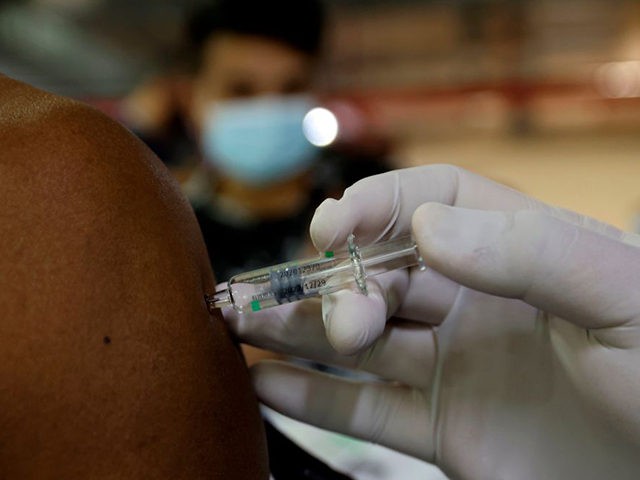The government of the United Arab Emirates (U.A.E.) began offering Sinopharm, a Chinese state-made coronavirus vaccine candidate, to children as young as three years old on Monday, the nation’s health ministry announced.
“The Ministry of Health and Community Protection announces the availability of the ‘Sinopharm’ vaccine for the age group 3-17 years, based on the results of clinical studies, the strict evaluation of an emergency use permit, and a local evaluation that complies with approved regulations,” the U.A.E. government wrote in a statement posted to its official Twitter account on August 2. The Kingdom provided no details of the “clinical trials” and “evaluations” referenced in the press release.
“Some members of Abu Dhabi’s ruling family are participating in a trial administering China’s Sinopharm COVID-19 [Chinese coronavirus] vaccine to children aged 3-17,” the Abu Dhabi Government Media Office revealed on June 16 in a statement posted to its official Twitter account.
“The trial will monitor the immune response of 900 children ‘in preparation to vaccinate children in the near future,'” the statement read. Abu Dhabi is the U.A.E.’s capital city and serves as the seat of the Kingdom’s government.
“Children are at extremely slim risk of dying from Covid-19, according to some of the most comprehensive studies to date, which indicate the threat might be even lower than previously thought,” the Wall Street Journal reported on July 8, referring to three recent studies by researchers in Britain. The scientists based their analyses on medical records from the U.K.’s national health system and culled data from other countries.
“Some 99.995 percent of the 469,982 children in England who were infected during the year examined by researchers survived, one study found,” according to the newspaper.
The U.K. researchers based their death study on a time period spanning March 1, 2020, to February 28, 2021.
“[T]here were fewer deaths among children due to the virus than initially suspected,” the Journal noted. “Among the 61 child deaths linked to a positive Covid-19 test in England, 25 were actually caused by the illness, the study found.”
The U.A.E. in May approved a Chinese coronavirus vaccine developed by Pfizer-BioNTech “for children aged between 12 and 15 on an emergency basis,” the National reported.
“The [U.A.E.] Ministry of Health and Prevention said on Thursday [May 13] the approval was given after the country carried out successful clinical trials and assessments,” the Abu Dhabi-based newspaper noted at the time.
The U.S.-based multinational pharmaceutical company Pfizer created its Chinese coronavirus vaccine together with the German biotech company BioNTech. The vaccine is based on mRNA technology, which is “a relatively new technology,” according to a July 29 article published by the Yale School of Medicine’s official website.
“Unlike vaccines that put a weakened or inactivated disease germ into the body, the Pfizer-BioNTech mRNA vaccine delivers a tiny piece of genetic code from the SARS CoV-2 virus to host cells in the body, essentially giving those cells instructions, or blueprints, for making copies of spike proteins (the spikes you see sticking out of the coronavirus in pictures online and on TV),” the medical school explained.
“The spikes do the work of penetrating and infecting host cells,” the article continued. “These proteins stimulate an immune response, producing antibodies and developing memory cells that will recognize and respond if the body is infected with the actual virus.”
Sinopharm is an “inactivated” Chinese coronavirus vaccine candidate. The inoculation’s name derives from its state-owned developer, the China National Pharmaceutical Group, which is commonly referred to as Sinopharm. Inactivated vaccines work by using the “killed version of the germ that causes a disease” to impart immunity to a recipient, according to the U.S. Department of Health and Human Services (HHS).

COMMENTS
Please let us know if you're having issues with commenting.